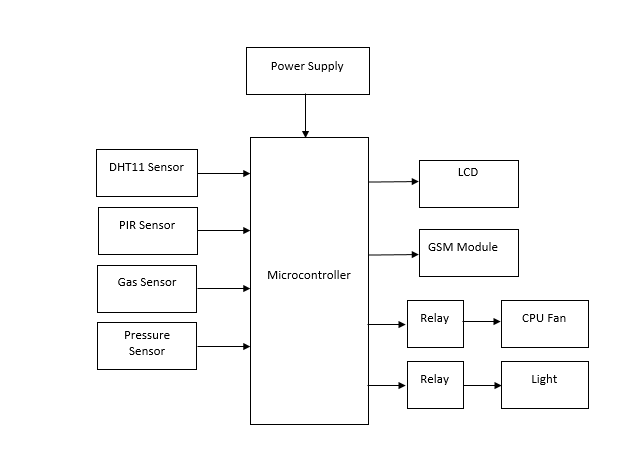Smart Building Energy Management System Using Machine Learning And IOT
Objective
The main objective of this project is to get the building data like Temperature, gas values, pressure values and motion detection
Abstract
This abstract describes the development of an integrated system for smart energy management using a Raspberry Pi interfaced with multiple sensors. The system incorporates a Passive Infrared (PIR) motion sensor, a gas sensor, a DHT11 temperature and humidity sensor, and an atmospheric pressure sensor. These sensors collectively enable the measurement of motion, temperature, humidity, and atmospheric pressure within a given environment. The gathered sensor data is then processed through a machine learning algorithm, which plays a pivotal role in decision-making for energy optimization. The primary objective of this system is to enhance energy efficiency by automating the control of electrical loads such as fans and lights. If the machine learning algorithm detects an absence of people in the vicinity, it triggers a relay-based mechanism to power off these loads.
The implementation of this system serves as an intelligent solution to minimize energy consumption when it is not required, thereby contributing to effective energy management. By utilizing sensor data and machine learning, it ensures a more responsive and dynamic approach to control electrical appliances, ultimately leading to reduced energy usage and associated cost savings. This integration aligns with the broader goals of creating sustainable and environmentally responsible smart spaces. And those values will upload to a webserver for remote monitoring and analysis.
Keywords: Machine Learning, Raspberry pi, DHT11, Gas Sensor, Energy ManagementNOTE: Without the concern of our team, please don't submit to the college. This Abstract varies based on student requirements.
Block Diagram

Specifications
Hardware Requirements:
- Raspberry pi
- Gas sensor
- Pressure Sensor
- PIR Sensor
- DHT11
- Power Supply
- Buzzer
- LCD
Software Requirements:
- Rasbian OS
- Python
Learning Outcomes
- Raspberrypi pin diagram and architecture
- How to install Raspberry pi software
- Setting up and installation procedure for Raspberry pi
- Introduction to Raspberrypi
- Basic coding in python
- Working of LCD
- Interface LCD with raspberry pi
- Working of power supply
- About Project Development Life Cycle:
- Planning and Requirement Gathering (software’s, Tools, Hardware components, etc.,)
- Schematic preparation
- Code development and debugging
- Hardware development and debugging
- Development of the Project and Output testing
- Practical exposure to:
- Hardware and software tools.
- Solution providing for real time problems.
- Working with team/ individual.
- Work on Creative ideas.
- Project development Skills
- Problem analyzing skills
- Problem solving skills
- Creativity and imaginary skills
- Programming skills
- Deployment
- Testing skills
- Debugging skills
- Project presentation skills


 Paper Publishing
Paper Publishing
